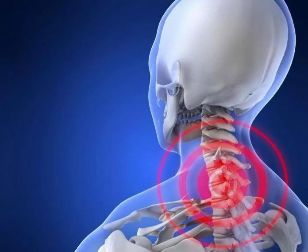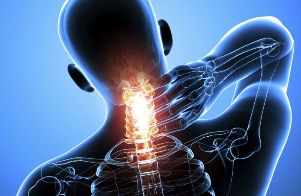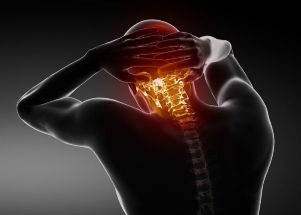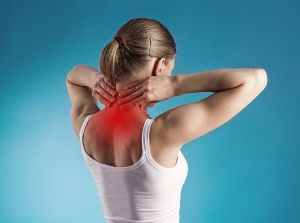Spinal diseases remain at the forefront of the most common diseases of the 21st century. The first line in most cases belongs to the diagnosis: cervical spine osteochondrosis - a dangerous disease that requires the mandatory intervention of experienced doctors.
The disease spares no one, neither women nor men (clinical cases of cervical osteochondrosis are reported less frequently in men than in women, but occur). In addition, the disease "rejuvenates" every year, today signs of cervical osteochondrosis can be observed not only in those who have reached the age of 40, but also in those who just celebrated their 25th birthday yesterday.
What is osteochondrosis of the cervical spine, what is the catalyst for this disease, why is an epidemic called osteochondrosis of the cervical vertebrae gaining momentum, why do you have to visit thefrom osteochondrosis of the cervix? For those looking for answers to these questions, this article is intended. So, first things first.

General information about the disease
This disease can be described in one word - dystrophy. It occurs in the background of changes in the chemical composition of bone and cartilage tissue and loses the elasticity and strength of the elements of the spinal column (discs). Their structure changes, first the outer layer (annulus fibrosus) is destroyed and then the inner layer (nucleus pulposus). A disc (fibrous cartilage) that completely loses its properties may deform, overgrow with growths (osteophytes) and move.
The plates, by changing their shape, size, and location, either pinch the nerve roots (they can injure one of the 8 pairs of spinal nerves in this area) or the blood vessels (the arteries responsible for feeding the brain pass through this area). . . . In both the first and second cases, the symptoms of osteochondrosis of the cervical spine are clearly felt.
Cervical osteochondrosis is the most common diagnosis that a neurologist or vertebrologist should tell their patient. There are two possible causes of osteochondrosis of the cervical vertebra as the most common cause of a doctor's visit:
- Anatomical features. Vulnerability of the upper part of the spine is associated with miniature and fragility of related elements (vertebrae, discs).
- Severe loads. The neck is responsible for both mobility and stability. This cannot trigger rapid "wear" of weak links.
Is that why many people ask about osteochondrosis of the cervix?
Causes of the disease
Before we get to the point: to cure osteochondrosis of the cervix, you need to understand the reasons for its occurrence and try to rule out the factors that may trigger its onset.

It is not possible to provide a complete list of catalysts, but outlines the moments that may lead to signs of cervical spine osteochondrosis not waiting.
Main causes of osteochondrosis:
- Unhealthy eating (running snacks, fast food, lack of diet and a fully balanced diet - this is a direct path to cartilage and bone tissue depletion, lack of trace elements and vitamins that support your health);
- sedentary lifestyle (another possible option is provoking a lack of physical activity, stagnation of spinal elements and a lack of adequate oxygen supply to tissues);
- genetic predisposition (in this case, you can ask your parents what to do with cervical osteochondrosis, they will tell you how to get rid of osteochondrosis of the cervical spine and how this disease manifests itself);
- delayed injuries (need to obtain information about what cervical osteochondrosis may occur even if the development of this disease was a displacement or rupture of the intervertebral discs due to injury);
- vascular diseases, infectious or inflammatory in nature (in the first case, information on the subject: treatment of osteochondrosis of the cervical spine occurs due to a lack of nutrients that support cartilage tissue, the second due to defects in autoimmune and necrotic processes that destroy joints, vertebrae and vertebrae (plates).
Hormonal background instability caused by overweight or stressful situations, as well as improper posture (scoliosis), are two more reasons to learn about the case material: is it possible to cure osteochondrosis of the cervical spine.
Signs of the disease
Causes of cervical osteochondrosis have been identified. The errors have been fixed. Now the most important thing is not to miss the symptoms of osteochondrosis of the neck (in case the risk factors have been eliminated too late and the disease has already begun to manifest). The sooner they are diagnosed, the easier and faster the path to recovery.
For convenience, all signs of the disease should be divided into two groups. This can be done on the basis of the main criterion: origin.
The first group is the phenomenon caused by the capture of blood vessels (caused by vascular changes). Compressed channels for the transport of blood, saturated with oxygen and nutrients, are not able to fully cope with their function, the brain parts receive less food and lose some of their functional abilities.

The second group is symptoms, the manifestation of which is associated with nerve endings (caused by neurological changes). In most cases, the vagus nerve (coordinates the condition of the esophagus, pharynx, and larynx), the phrenic nerve (responsible for the pulse and regulation of the respiratory process), and the nerve endings that innervate other organs in the internal structure, the plates and vertebraethey suffer from deformation, destruction and mixing.
The table below provides more detailed information on how not to miss the first "bells" of the disease in osteochondrosis of the cervical spine and use the help offered by your doctor in a timely manner.
Symptoms of the disease
| Origin | Manifestations |
|---|---|
| Changes in the state of the vascular system | dizziness, fainting lack of coordination memory impairment decreased attention concentration loss of visual acuity and hearing black spots in the eye ringing, tinnitus apathy, depression panic attacks nausea, vomiting |
| Neurological changes | pain in the neck, temple, cervix (permanent, paroxysmal) pain in the arm, shoulder, interscapular region, chest shortness of breath, shortness of breath, choking pressurechest tightness, angina lump in throat, difficulty swallowing, dry, itchy throat |
Important! If at least one symptom appears from the table above, you should urgently undergo an examination and begin treatment for cervical spine osteochondrosis. Any other behavior can have more serious consequences that cannot be cured without surgery!
Complex therapy
How to treat cervical osteochondrosis is how the painful question sounds. The answer is clear: with the help of complex therapy prescribed by a competent doctor.
Overcoming this disease requires discipline on the part of the patient and strict adherence to the recommendations of the specialist. In most cases, osteochondrosis of the cervical spine can be cured using several methods of traditional and alternative medicine at the same time (only a doctor coordinating the patient can prescribe a special program to effectively treat cervical osteochondrosis).
Usually selects techniques from the following list:
movement therapy

Physiotherapy is an excellent tool in health therapy that allows you to cure osteochondrosis of the cervical spine and improve your overall health. It solves several problems at once:
- normalizes blood circulation;
- speeds up metabolic processes;
- relieves pain syndrome;
- strengthens the muscle ligament;
- unloads the spine;
- fills you with cheerfulness and optimism.
There are a number of rules that explain how to get rid of osteochondrosis of the cervix without proper charging without making the situation worse. It reads:
- the series of exercises should be selected by a professional who has an idea of the general clinical picture (age, chronic diseases and patient characteristics);
- Inconveniences during classes should be a reason for rejecting the gym (at least before seeing a doctor) and should be a period of disease aggravation;
- sudden movements that are too active are completely ruled out, this must be done carefully, without haste; Exercises
- should be done regularly (exercise from time to time will not solve the problem).
Massage (manual therapy)
Is there another way to cure osteochondrosis of the neck? Quite. All you need to activate the regenerating properties of the body, relieve cramps, release nerve roots, pinch arteries and reduce symptoms is the skillful hand of an excellent masseur or manual.
The general guidelines are:
- the procedure must be carried out by a suitably qualified and experienced professional;
- exposure time in the problem area - up to 35 minutes;
- duration of one course (without interruption) - up to 12 sessions;
- Changes in the patient's condition should be known to their doctor.
Important! Performing a massage in case of osteochondrosis or visiting a therapist's office - the manual with contraindications is strictly forbidden!
Physiotherapy

This area of clinical medicine has found its own answer to the question: how to get rid of osteochondrosis? He recommends using the healing properties of various phenomena, including:
- high frequency sound waves (ultrasound);
- mechanical vibrations (vibration);
- electric currents of different intensities (electrophoresis, UHF);
- ultraviolet radiation (quartz);
- other physiotherapy techniques.
These procedures contribute to the development of positive dynamics. They normalize blood flow, relieve inflammation, relieve pain, facilitate the administration of medications, and shorten the time required for their absorption into tissues.
Medication
How to treat osteochondrosis of the cervix, which is constantly evolving despite attempts to stop this process? Only with drugs designed to eliminate the causes of the phenomenon.
All medicines used in the integrated approach are divided into several groups, depending on the action taken. The table below will help clarify the situation.
Medications
| Group | Action | |
|---|---|---|
| Analgesics, NSAIDs | analgesia, elimination of the inflammatory process |
|
| Muscle relaxers |
Relieve muscle cramps | |
| Chondroprotectors | Activating the tissue regeneration function, restoring the structure of discs, vertebrae, joints |
|
| Vitamins and Minerals |
stimulation of metabolic processes, activation of the body's protective properties, improved microcirculation, strengthening of the immune system, |
It is up to the practitioner to decide how to treat osteochondrosis of the neck. You can supplement your therapy with drugs that belong to the group of vasodilators (to relieve vascular spasms), antidepressants (to relieve nervous tension), and others, depending on the general clinical picture of the disease.
In summary, we can give a clear answer to the main question: is osteochondrosis treated? Yes, but only under the strict supervision of a competent doctor and with the great desire of the patient himself!





































